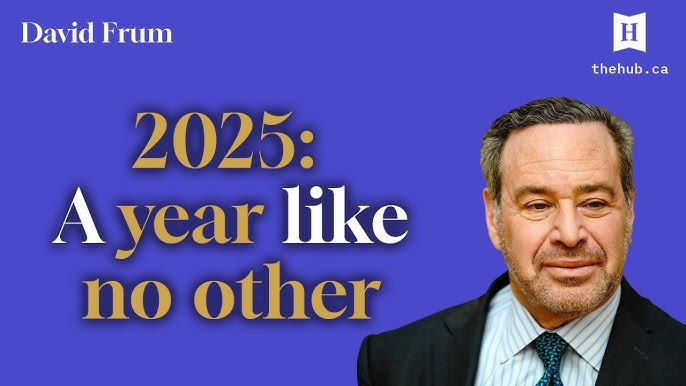
Peter Goodman: The Messy Reality of ‘Made in America’
The construction of a giant factory complex in Arizona was supposed to embody the Trump administration’s ability to bring manufacturing back to the United States.…
Thought Leader: Peter Goodman
How do the most effective innovators—of all shapes and sizes—think and act? How can we give ourselves a meaningful creativity upgrade, elevating our performance in both business and life?
The following eight core mindsets are used by the world’s most prolific innovators—and by ordinary people, like you and me—to elevate creative output, topple pesky problems and seize new opportunity. Incorporate them into your own life, and you’ll quickly see the results.
Falling in love with the problem involves taking the time to carefully examine and understand the challenge at hand rather than prematurely landing on a specific solution. We often become so focused on a particular manner of solving a problem that we miss out on those less obvious creative opportunities that can be much more successful. The best innovators remain flexible and open-minded in order to find the optimal approach—more committed to solving the problem than a particular manner of solving it.
Innovators of all shapes and sizes realize that any obstacle can be conquered with enough imagination. They hold a fundamental belief that every barrier can be penetrated, which gives them the moxie to take on even the most difficult challenges. Everyday innovators run toward problems—not away from them—realizing that friction points are essentially heat maps for innovation. Many of the world’s greatest innovations (one could argue all of them) have come from an attempt to address some type of burning problem. Let’s see problems for the opportunities they are and look for the right solution—not just the solution that seems to work right in the moment.
Let’s take the initiative to get started now instead of waiting for permission, detailed instructions or ideal conditions. A willingness to course-correct along the way, adapt to changing circumstances in real-time and operate with agility is much more valuable than waiting until your entire game plan is fully baked. Some of the greatest innovations started as something else entirely, but they never would have come into being if their creators didn’t simply start quickly and adapt frequently.
Anyone with a bank account knows the power of compounding interest, and innovation works much in the same way. Those who begin quickly and then make consistent, high-frequency deposits are the ones that enjoy the biggest account balances in the end. Think of this phenomenon as compounding innovation interest.
Simply put, you’re far better off starting quickly and adjusting as you go, instead of waiting for permission, a directive, ideal conditions or a bulletproof game plan.
Innovation is both strengthened and de-risked through experimentation. By building a framework and conditions for testing and creative exploration, ideas are cultivated and optimized. Give your ideas the chance to grow and develop by putting them through their paces—and don’t be afraid of what your findings will be.
While it borrows its name from the culinary industry, you don’t need to be in the food business to open a test kitchen. Lawyers conduct mock trials to test out their arguments in a safe environment before making their case to a live jury. Surgeons now hone their skills using augmented reality goggles as they practice experimental procedures on robotic patients. Car companies prefer to bang up test dummies rather than real customers, while life insurance sales professionals conduct simulated presentations so they can optimize their approach before stepping in front of paying customers. Your test kitchen may be a designated physical space or it could be a metaphorical one that lives only in the hearts and minds of your team. The common thread is a safe, well-equipped environment where you can invent, test and refine.
It’s time to ditch the tired adage of “if it ain’t broke, don’t fix it.” In fact, everyday innovators proactively go out of their way to deconstruct, examine and rebuild their ideas and the world around them in order to deliver superior products, systems, processes and works of art. They don’t just look at failures and ask, “Why isn’t this working?” They look at successes and ask, “Why isn’t this working even better?” They’re willing to rock the boat in order to design an even better boat.
In the same way that the milk in your fridge has an expiration date, have you ever wondered why a mandatory refresh date doesn’t exist on most things in the business world? When a new system or process is enacted, why is it assumed that the approach should be everlasting? It doesn’t make sense to ascribe permanence in a world that’s changing so rapidly.
It’s our responsibility to seek new versions, to deconstruct and rebuild, to reimagine and pursue a better way. Everyday innovators are constantly examining current conditions, looking for opportunities to break and then create new ones. Upgrades can pay significant dividends when applied to products, team, production practices, safety standards, sales efforts, training and nearly every other system, big or small. The same method used to reinvent an industry can apply all the way down to retooling how you run your Monday morning team meeting.
Successful everyday innovators are downright allergic to the tried-and-true. They prefer unexpected approaches to obvious ones, challenging conventional wisdom by searching for unorthodox ideas. They have a penchant for discovering oddball, sometimes even bizarre, ideas in order to discover better outcomes.
Most of us make decisions—big and small—within a generally accepted range of possibilities. We’ve established left and right guardrails to ensure we don’t drift too far afield, largely to protect ourselves from unfavorable consequences. Yet counterintuitively, the very act of playing it safe has become the riskiest move of all. We may not get laughed out of the room, but we run the far more frightening risk of mediocrity and irrelevance. To fight back, everyday innovators push themselves to explore the unexpected. They discard obvious ideas in favor of unorthodox ones. They realize that those strange, peculiar, weird ideas are the ones that stand out and make history.
Counterintuitively, being resource-constrained can fuel creative breakthroughs so we must develop a scrappy approach to doing more with less. Resourcefulness and ingenuity become powerful weapons in the fight for superior innovation.
When most of us think of innovation, we quickly create a mental checklist of all the resources we lack. There never seems to be enough time, money, raw materials, support, bandwidth, computing power, training or staff. We allow the apparent lack of resources to trick us into thinking we can’t forge ahead, but in fact, getting scrappy is a hallmark of creativity. Everyday innovators use their internal resource of imagination to compensate for any lack of external resources. They realize that constraints drive breakthroughs far more often than abundance. They outpunch their satiated rivals by remaining hungry, squeezing every last drop out of their proverbial toothpaste tubes.
Adding small, creative flourishes can yield significantly improved results. An extra dose of surprise-and-delight enables new inventions, competitive edge and individual achievement.
A dinner mint can represent any unexpected addition, from extra ideas or time savings to physical goodies. If you’re asked to deliver a report on your top five competitors, a dinner mint version would be to expand your efforts to produce your report on seven competitors instead. Or maybe you could format the report in a colorful, well-designed presentation instead of a dull, black and white document.
If a client is expecting your response by Thursday afternoon, a dinner mint might be to shave a day off the timeline to deliver on Wednesday morning. While a dinner mint could certainly be a physical gift, it doesn’t have to be. Rather, you embrace the dinner mint concept every time you overdeliver. Upgrading your work product with just 5 percent more creativity can give you the big-time boost you’re looking for.
Setbacks are inevitable, but everyday innovators use creative resilience to overcome adversity. Mistakes are a natural and important part of the innovation process and can be flipped into advantages when studied and embraced.
The “Fall Seven, Stand Eight” philosophy is best described as the intersection of creativity and resilience. It’s not a Pollyanna you-can-do-anything cliché, but rather a deliberate response to adversity. Instead of dogged persistence, everyday innovators use setbacks as an opportunity to bounce back with a different approach each time, using inventive thinking to guide the way. Removing the judgement of right or wrong, they view stumbles as data which can inform subsequent creative attempts. Fusing tenacity with imagination, the fight is won through a series of creative tweaks and adaptations.
Now that you have the requisite tools and mindsets, it’s time to take your shot. It will take courage and commitment. But as we’ve learned, even a shot that misses the mark is better than the shot not taken.
Author Nido Qubein put it beautifully when he acknowledged, “The price of discipline is always less than the pain of regret.” While it takes an investment of discipline to fully cultivate our creative skills, our inventiveness becomes the key that unlocks the vault of our full potential.
As you gear up to take your shot, remember that even the most world-changing innovations are nothing more than a collage of tiny creative acts. Your most successful path forward isn’t taking gigantic, wild swings but rather to cultivate small, daily shots of creativity that coalesce into meaningful results. When you build the habit and develop your skills, your shots become less risky and more impactful.
Josh Linkner is a five-time tech entrepreneur, New York Times bestselling author, venture capital investor, keynote speaker and professional-level jazz guitarist. To learn more, please visit JoshLinkner.com
Peter Goodman: The Messy Reality of ‘Made in America’
The construction of a giant factory complex in Arizona was supposed to embody the Trump administration’s ability to bring manufacturing back to the United States.…
Thought Leader: Peter Goodman
Peter Zeihan: The Death of the US Tech Sector
We’re doing a two-part series on the tech sector. Today, we’ll be looking at the disruption caused by deglobalization and Trump’s policies. The gadgets and…
Thought Leader: Peter Zeihan
David Frum breaks down 2025’s defining moments
Leading author, journalist, and thinker David Frum and The Hub’s editor-at-large Sean Speer reflect on the most significant political developments of 2025. They discuss a…
Thought Leader: David Frum

